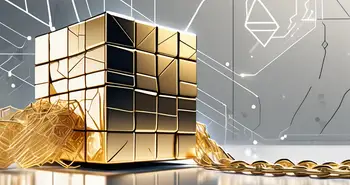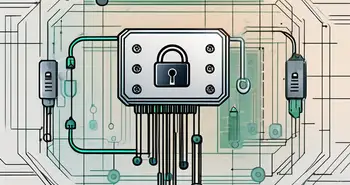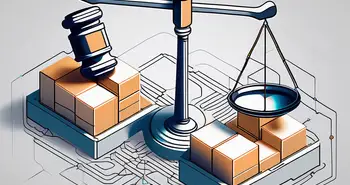What Are Uncle Blocks? A Quick Overview

Understanding uncle blocks can be a complex journey, but it's an essential aspect of the blockchain universe that merits exploration. Building on my background in blockchain technology, I aim to provide a comprehensive yet engaging overview of uncle blocks throughout this article.
Understanding the Concept of Uncle Blocks
Definition of Uncle Blocks
In the realm of blockchain, an uncle block is a valid block that is not included in the main blockchain. Instead, it operates as a secondary, or “uncle,” block that gets acknowledged but does not form part of the primary chain. This situation arises when two miners successfully mine blocks nearly simultaneously, leading to a scenario in which the network cannot immediately decide which block to accept. Uncle blocks serve to provide additional security and robustness to the blockchain network.
The Origin of Uncle Blocks
The concept of uncle blocks rose to prominence with the Ethereum blockchain. Ethereum's unique approach recognizes these orphaned blocks to compensate miners for their efforts, thus maintaining a level of fairness and encouraging participation in the network. As a result, uncle blocks contribute positively to network resilience by maintaining multiple versions of the blockchain.
Importance of Uncle Blocks in Network Security
Uncle blocks play a crucial role in enhancing the security of a blockchain network. By allowing for the inclusion of these blocks, Ethereum mitigates the risks associated with centralization and the potential for a single point of failure. This mechanism ensures that even if a block is not part of the main chain, it can still be referenced, thereby preserving the integrity of the network. Furthermore, the acknowledgment of uncle blocks can lead to a more equitable distribution of rewards among miners, which incentivizes them to continue contributing computational power to the network.
Impact on Blockchain Performance
The presence of uncle blocks can also influence the overall performance of a blockchain. While they add complexity to the network, they can help to reduce the likelihood of forks, which occur when two competing chains emerge. By allowing uncle blocks to coexist, the Ethereum network can maintain a more stable and consistent state, ultimately leading to faster transaction confirmations and a smoother user experience. Additionally, the ability to reference uncle blocks can provide valuable historical data for developers and researchers, enhancing the understanding of blockchain dynamics and miner behavior.
The Role of Uncle Blocks in Blockchain
How Uncle Blocks Contribute to Network Security
One of the primary roles of uncle blocks is enhancing network security. By adding an additional layer of complexity, they make it exceedingly challenging for any malicious actor to manipulate the blockchain. Their existence means that if a small portion of the network attempts to cause a fork, the likelihood of success diminishes. This multifaceted nature reinforces the integrity of the blockchain and protects it from potential attacks. Furthermore, uncle blocks serve as a deterrent to double-spending attacks, as they create alternative paths in the blockchain that can validate transactions even if the main chain is compromised. This redundancy not only strengthens the overall security framework but also builds trust among users who rely on the system for their transactions.
The Impact of Uncle Blocks on Transaction Speed
Moreover, uncle blocks can impact transaction speeds positively. In cases where blocks are mined at a rapid pace, incorporating uncle blocks into the system enables smoother transaction verifications. It essentially reduces the blockage in processing and aids in the swift confirmation of transactions. Personally, I've noticed this effect while working with Ethereum-based applications, where speed and efficiency remain paramount for user satisfaction. Additionally, the presence of uncle blocks can help balance the load on the network during peak times, allowing for a more equitable distribution of resources. This can be particularly beneficial during high-traffic events, such as token launches or major market fluctuations, where transaction volume spikes dramatically. The ability to maintain performance under such conditions is crucial for sustaining user engagement and confidence in the platform.
The Technical Aspects of Uncle Blocks
The Creation Process of Uncle Blocks
The creation of uncle blocks typically occurs when two miners discover a block nearly simultaneously. The network has to determine which block to add to its primary chain, leading to the temporary existence of these unconsumed blocks. Effective communication among nodes is crucial during this process. The more decentralized and cooperative the network, the better the handling of uncle blocks, allowing for smoother continuity. This phenomenon is particularly interesting in high-traffic scenarios where many miners are competing to solve complex cryptographic puzzles. The race to validate transactions can lead to a situation where two blocks are mined within seconds of each other, highlighting the importance of timing and network latency in blockchain operations. As miners operate under varying conditions and with different hardware capabilities, the dynamics of block creation can vary significantly, resulting in a rich tapestry of block generation that reflects the diverse ecosystem of participants.
How Uncle Blocks are Incorporated into the Blockchain
Incorporating uncle blocks into the blockchain is a refined process. They are not merely discarded; rather, they are sometimes woven through potential rewards and block validations. Ethereum incentivizes miner nodes to work on uncle blocks, distributing rewards that enhance network participation. This seamless integration ensures that uncle blocks do not just vanish; they play a critical role in maintaining the overall health of the blockchain ecosystem. The reward mechanism for uncle blocks serves to encourage miners to remain engaged with the network, even when their blocks are not included in the main chain. This approach not only fosters a sense of community among miners but also helps to secure the network against potential attacks, as more participants are incentivized to contribute their computational power. Additionally, the presence of uncle blocks can lead to a more resilient blockchain, as they provide alternative pathways for transaction validation, thereby reducing the risk of centralization and enhancing the overall robustness of the system.
The Pros and Cons of Uncle Blocks
The Benefits of Using Uncle Blocks
Uncle blocks present several advantages, including:
- Increased Security: Adding layers of complexity protects against centralized attacks.
- Enhanced Efficiency: They facilitate quicker transaction confirmations.
- Miner Incentives: By rewarding miners, they encourage more people to join the network, boosting overall participation.
The Potential Drawbacks of Uncle Blocks
However, uncle blocks also have their downsides. They can lead to:
- Block Bloat: Over time, they can contribute to the growth of the blockchain size.
- Complexity: The system becomes more complicated, which can deter new users.
- Inconsistent Rewards: Miners might not always feel incentivized if too many uncle blocks exist, leading to dissatisfaction.
The Future of Uncle Blocks
Predictions for Uncle Blocks in Upcoming Years
Looking ahead, I predict that uncle blocks will continue to evolve alongside the blockchain technology they support. As scalability and efficiency remain critical concerns, uncle blocks could be refined further to better serve both security and speed needs. Future protocols may emerge that enhance the management and integration of these blocks, thereby fostering a more robust framework.
The Role of Uncle Blocks in Evolving Blockchain Technology
In an ever-evolving blockchain landscape, uncle blocks are likely to serve as a conceptual bridge between traditional mining practices and advanced consensus protocols. As decentralized finance and other applications grow, incorporating efficient uncle block management could transform how transactions are validated, leading to a more decentralized and secure environment for all users.
FAQ
What exactly are uncle blocks?
Uncle blocks are valid blocks that are not included in the main blockchain. They contribute to network security and can speed up transaction verification.
How do uncle blocks impact network security?
By adding complexity to the network, uncle blocks make it harder for attackers to manipulate the blockchain, thus enhancing security.
Are there any drawbacks to uncle blocks?
Yes, uncle blocks can lead to block bloat, introduce complexity, and create inconsistent rewards for miners.
What is the future of uncle blocks?
Uncle blocks are expected to evolve in response to advancements in blockchain technology, potentially enhancing both security and efficiency.
With these insights into uncle blocks, I hope you feel empowered to delve deeper into this fascinating aspect of blockchain technology. Understanding uncle blocks not only enriches your knowledge but also helps you appreciate the intricate web of protocols that keep our digital transactions secure.
Now that you've gained a deeper understanding of uncle blocks and their role in enhancing blockchain technology, why not experience the power of blockchain in your trading endeavors? Morpher.com offers you a revolutionary trading platform that embodies the innovation and security of blockchain. With zero fees, infinite liquidity, and the ability to trade a multitude of assets, Morpher is tailored for investors who value flexibility and control. Embrace the future of trading with Morpher's non-custodial wallet, fractional investing, and up to 10x leverage. Ready to transform your trading experience? Sign Up and Get Your Free Sign Up Bonus today and join the community of traders leveraging the best of blockchain technology.

Disclaimer: All investments involve risk, and the past performance of a security, industry, sector, market, financial product, trading strategy, or individual’s trading does not guarantee future results or returns. Investors are fully responsible for any investment decisions they make. Such decisions should be based solely on an evaluation of their financial circumstances, investment objectives, risk tolerance, and liquidity needs. This post does not constitute investment advice.

Painless trading for everyone
Hundreds of markets all in one place - Apple, Bitcoin, Gold, Watches, NFTs, Sneakers and so much more.

Painless trading for everyone
Hundreds of markets all in one place - Apple, Bitcoin, Gold, Watches, NFTs, Sneakers and so much more.








